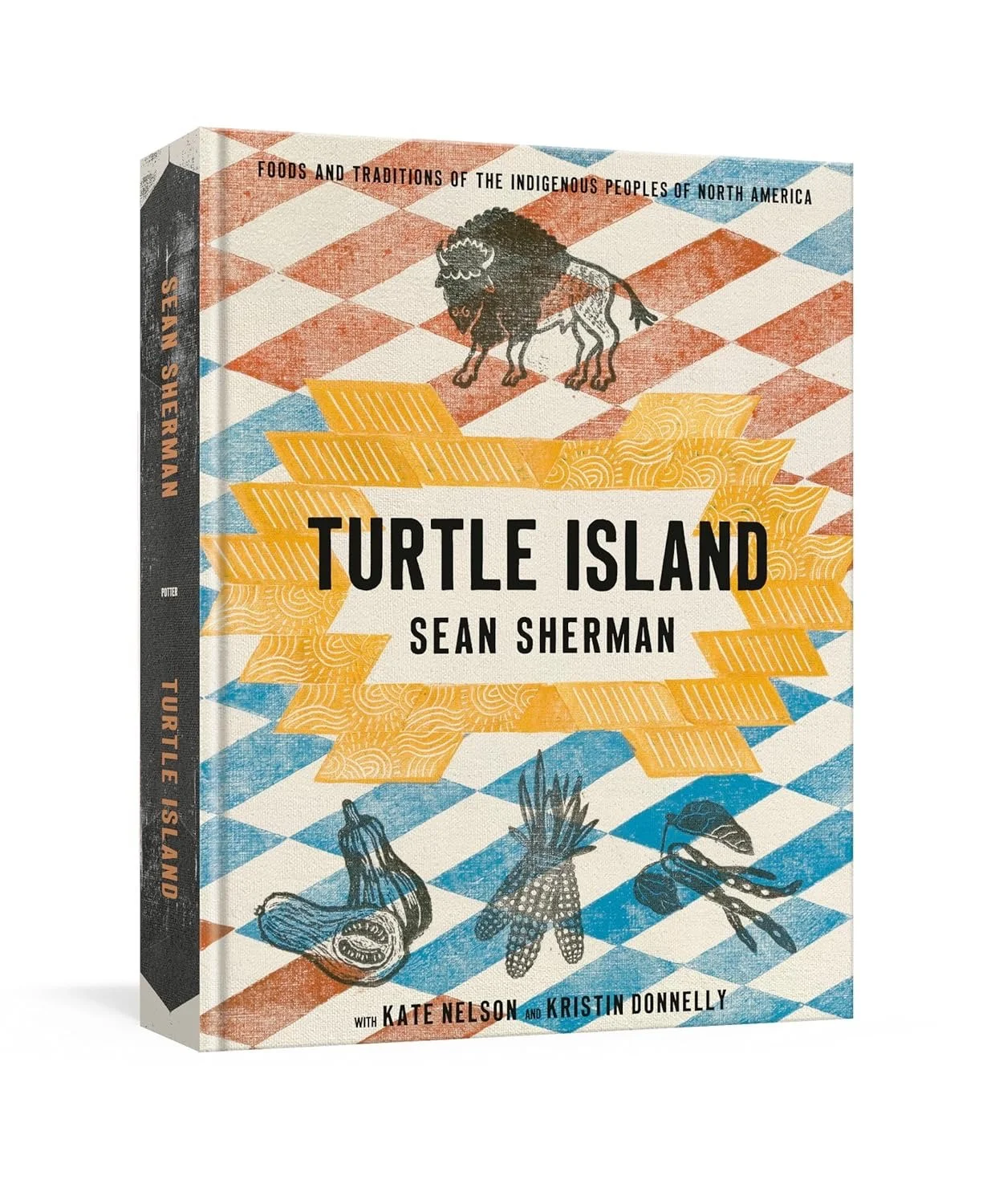Cookbook of the Week: Turtle Island by Sean Sherman
Last week, I was shopping at the renowned Northshire Bookstore in Manchester, Vermont. Typically, when immersed in a well-stocked cookbook collection, I have a hard time deciding which volume (or volumes) to bring home. This time, I only had eyes for Turtle Island.
Written by Sean Sherman, founder and chef of the non-profit Minneapolis restaurant, Owamni, along with co-authors Kate Nelson and Kristin Donnelly, the book shares recipes from indigenous peoples as far north as Alaska and as far south as Southern Mexico.
To showcase the native foods of these regions, the book leaves out post-colonial ingredients. You won’t find dairy products, cane sugar, chicken or wheat in these pages.
What you will find instead are dishes that center corn, squash, legumes, nuts and seeds, foraged plants and game meats. To those of us who are accustomed to “American cuisine” that focuses primarily on European ingredients, these recipes hold revelations. Cedar-Maple Baked Beans, for instance, are simmered with a piece of wood in the pot, which is removed before serving. There are also recipes for preparing beaver and moose, and for cooking things we walk by daily in warm weather without realizing that they’re edible. For instance, milkweed pods, which are blistered in a bit of sunflower oil, and sumac, a plant with red cones composed of fuzzy sour fruits, which grows alongside hundreds of miles of New England highways.
To begin the section on New England, Sherman deals with the more brutal aspects of the circumstances surrounding the holiday we refer to as Thanksgiving. It should be required reading for all of us. Following that, he shares recipes for Quahog and Corn Chowder seasoned with powdered wild leeks, Wild Mustard and Root Veggie Salad with Sunflower Dressing, and Blueberry Leather.
In the five years that I owned a small, 22-seat restaurant in Montpelier, Vermont, we offered 100 different, deeply researched menus. In the decade since, I’ve grown and cooked with flour corn, heirloom squash and dozens of types of beans in my garden, and foraged for wild leeks, mushrooms, roots and flowers to use in my kitchen. The history and current reality of native foods is so rich that in all that time cooking and eating, I’ve never made nor encountered any dishes like the ones Sherman shares.
I mention that only to point out that this book is so rich and diverse and deep that the most accomplished scholars and cooks will nevertheless find many new things herein. Nobody should hesitate to add it to their collection.
